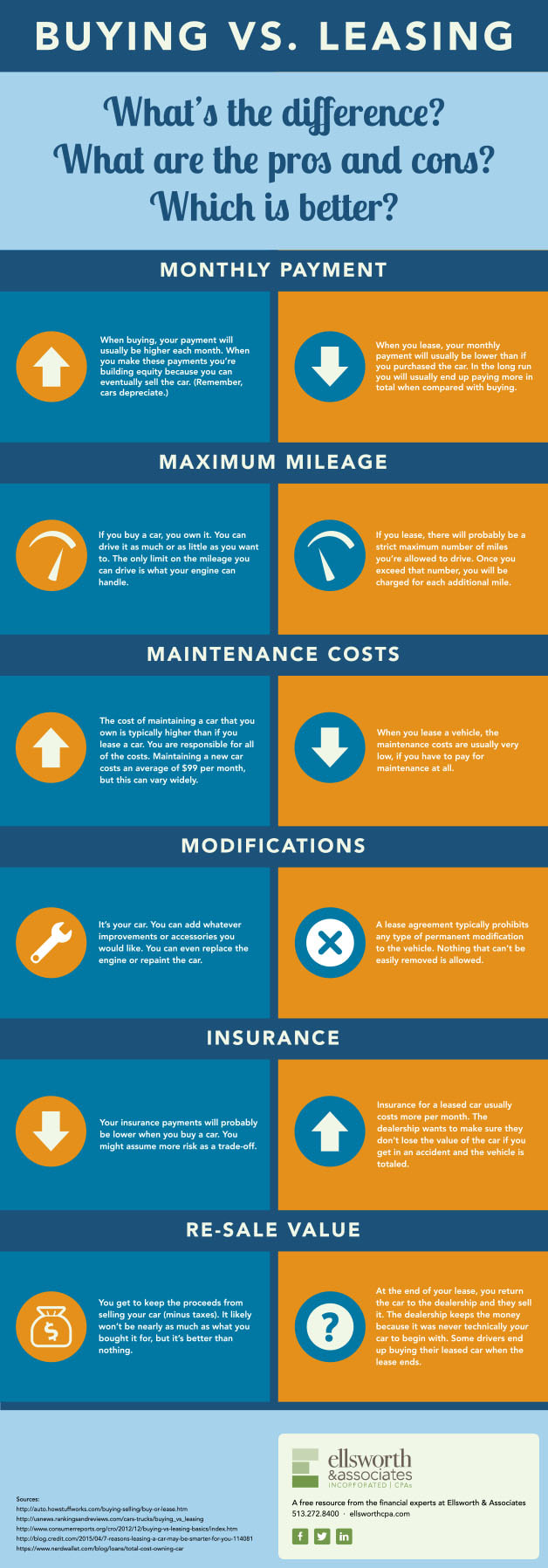|
Recording and reporting business expenses is a missed opportunity for many business owners and employees. Much of what you spend for business purposes is tax-deductible. Knowing whether you can or can't expense a purchase for business purposes can be difficult. Nevertheless, here are a few general guidelines to help. According to the IRS, business expenses must be ordinary and necessary to be deductible. That means they are normal and recognized in your business, as well as helpful and appropriate. You'll need to keep records (such as statements and ledgers) and supporting documents (receipts and invoices) to verify your deductions. Some expenses are subject to extra requirements, as described below. Travel ExpensesTravel expenses pertain to business trips and can include transportation to and from airports, your hotel and business meeting places. They also generally include lodging, meals, tips and other related incidentals.
Entertainment ExpensesEntertainment expenses need to be either directly connected to or related to the conduct of your business. That means that business is the foremost purpose of the activities and it's very probable you'll get income or future business benefits as a result. Expenses from entertainment that aren't considered directly related may still be deductible if they are associated with your business and occur just before or after a significant business conversation.
MileageBusiness use of your personal car is calculated according to your actual business-related expenses, or by multiplying your business mileage by the prescribed IRS rate (53.5 cents per mile in 2017).
0 Comments
Monthly Social Security and Supplemental Security Income (SSI) benefits for more than 66 million Americans will increase 2.0 percent in 2018. The Social Security Administration announced this week a 2 percent boost to monthly Social Security and Supplemental Security Income (SSI) benefits for 2018. The increase is the largest since 2012, and is based on the rise in the Consumer Price Index over the past 12 months ending in September 2017. For those still contributing to Social Security through wages, the potential maximum income subject to Social Security tax increases 1.2 percent this year, to $128,700. What Does It Mean for You?
Social Security & Medicare RatesThe Social Security and Medicare tax rates do not change from 2017 to 2018.
Note: The above tax rates are a combination of 6.20 percent Social Security and 1.45 percent for Medicare. There is also 0.9 percent Medicare wages surtax for those with wages above $200,000 single ($250,000 joint filers) that is not reflected in these figures. Please note that your employer also pays Social Security and Medicare taxes on your behalf. These figures are reflected in the self-employed tax rates, as self-employed individuals pay both halves of the tax.
If you have an Individual Taxpayer Identification Number (ITIN) instead of a Social Security number (SSN), you might need to act now or you'll be unable to file a tax return for 2017. Here is what you need to know. What to Know about ITINsITINs are identification numbers issued by the federal government for people who are not eligible to receive a SSN. An ITIN can be used to file tax returns and is also a form of identification often required by banks, insurance companies, and other institutions. Unfortunately, ITINs are also a source of identity fraud. To fight this, the 2015 PATH Act made considerable modifications to the program. Now many ITINs will expire if not renewed by December 31.
Renew Your ITINDon't wait until the last minute to realize your tax return has been rejected and your refund delayed because of an expired ITIN. To renew, fill out Form W-7 with the required support documents. To learn more, visit the ITIN information page on the IRS website.
Suppose you retire to a new state with warm weather and lower taxes. If you keep a part-time home in your original state or you later decide to return, you could have a tax problem. State tax authorities may argue you never really left, and that you owe them a big tax bill for all the income you earned while away. Here are tips to ensure this does not happen to you. Understand "domicile"Tax residency is usually based on the concept of "domicile." You may have many homes, but you can only have one domicile. A domicile is the place you intend to be your permanent home, and where you intend to return after being away. When these cases go to court, they are often decided by determining a person's intentions regarding their domicile. Consider this hypothetical example: Illinois resident Steve Seeyoulater moved to an apartment to pursue a lucrative job opportunity in Indianapolis, leaving his wife and children behind in Chicago. Steve reasoned that since he spent more than 70 percent of his time in Indiana, he could file his state return there and take advantage of its lower tax rate. The state of Illinois could easily disagree with Steve's assumption, since on the surface Steve intends for his permanent home to remain where his family is, in Illinois. Know the rules before you moveBefore moving, research the residency rules in your home and destination states. They often vary from state to state. Some states have specific guidelines on the number of days its residents must be in the state. Others are less exact. Keep good recordsIf you say you are in a state for a certain period of time, be ready to support your claim. If during an audit your credit card receipts conflict with where you claimed to be at the time, you will have problems. Demonstrate your intentionsIf you're going to file as a resident of a new state but also have a potential tax claim in another state, you have to be able to demonstrate your sincere intent to change your domicile. Here are some things you can do:
The Free Application for Federal Student Aid (FAFSA) is a tool students use to apply for more than $120 billion in federal funds. Regrettably, every year countless students miss out. A report from NerdWallet estimates that $1,861 per eligible high school graduate of free federal grant money went unused throughout 2014 because they did not submit a FAFSA. Even if you don't think you or your child meet the requirements for federal aid, filling out a FAFSA is important because it might be used to decide eligibility for nonfederal aid and private funds. FAFSA Available Oct. 1Previously, the FAFSA was not available until January. A recent change now makes the application available Oct. 1. This is because the 2018-19 FAFSA can be completed with your 2016 tax information. Avoid FAFSA MistakesDon't forgo federal student aid by making one of the following common filing mistakes:
Mistake: Not reading the instructions or questions Tip: Answer all the questions, even if the answer is zero. If left blank, a question will be considered unanswered. Here are some quick tips:
Mistake: Incorrect, incomplete, or nonmatching data Tip: Complete the FAFSA online. Although you can complete the FAFSA on paper, it takes only three to five days to process when submitted electronically. The online version has built-in safeguards that identify and prevent many errors. Plus, the IRS Data Retrieval Tool can import information directly from your tax return. Logging in with a Federal Student Aid (FSA) ID will automatically load basic information (e.g., name, birthdate, and Social Security number), reducing the likelihood of typos. You'll even receive confirmation of receipt once you submit your online application. Mistake: Not filing on time Tip: Note the new October FAFSA filing start date and get the application submitted as soon as possible. The sooner you or your child gets started, the higher the likelihood of being awarded funds, since many are distributed on a first-come, first-served basis. Remember, students need to complete a FAFSA each year because eligibility does not carry over and can vary based on circumstances. Students can use the FAFSA Web Worksheet now to gather and organize the data needed for their application, available at fafsa.gov. While most of us are never audited, when it happens we can feel like a lamb thrown in a room with a lion. The IRS auditor does these audits every day. They know what to look for, and may ask leading questions that are easy to answer incorrectly. Here are some tips to help you when you are in the crosshairs of an IRS audit. Timely Address IRS CorrespondenceDo not let any issues raised in an IRS correspondence letter get to a point where a face-to-face examination is required. Ask for HelpDo this right away. Too many clients think the problem is easy to resolve, but inadvertently say the wrong thing, resulting in another audit issue. Understand What's Being AskedClearly understanding the core question behind the audit can simplify the solution. Why is the IRS asking to see your 1099s? Do they have a form that you do not? Why are they asking about your small business profits? Are they thinking your business is a hobby? See the Audit through the Eyes of IRS AuditorThe IRS focuses auditor training on several areas. These are published in Audit Techniques Guides (ATGs) and are available for review on their web site at irs.gov (search for "Audit Techniques Guides" in the search bar). They are invaluable in identifying areas for potential audits, and can help you understand what the IRS likes to question. While most of the ATGs deal with business taxation, reviewing the topics can be useful in understanding where audit risks are and what you can do to prepare yourself in case of an audit. Common ATG Topics
If you have business activity that touches any of these topics, it makes sense to understand how an IRS auditor is trained. By reviewing the specific ATG you will know the process of the IRS audit and gain some insight into how the audit will go.
The fall semester is in full swing. As teachers are getting to know a new group of students, they undoubtedly have a lot on their minds other than taxes. Still, remembering what to keep records of at this point can help lower their tax burden. There are three important work-related tax benefits that might help educators lessen their tax bill. There are tax deductions for teachers who have qualified expenses related to their profession. The cost of paying for things like classroom supplies, training, and travel might be deductible. The way to take advantage of these tax breaks depends on how you do your taxes: Claiming the Educator Expense Deduction (up to $250) or, for those who itemize their deductions, claiming eligible work-related expenses as a miscellaneous deduction on Schedule A. A third key benefit enables many teachers and other educators to take advantage of various education tax benefits for their continuing educational pursuits, especially the Lifetime Learning Credit or, in some cases depending on your circumstances, the American Opportunity Tax Credit. Educator Expense Deduction Educators can deduct up to $250 ($500 if married filing jointly and both spouses are eligible educators, but not more than $250 each) of unreimbursed business expenses. The educator expense deduction, claimed on either Form 1040 Line 23 or Form 1040A Line 16, is available even if an educator doesn’t itemize their deductions. To do so, the taxpayer must be a kindergarten through grade 12 teacher, instructor, counselor, principal, or aide for at least 900 hours a school year in a school that provides elementary or secondary education as determined under state law. Those who qualify can deduct costs like books, supplies, computer equipment and software, classroom equipment and supplementary materials used in the classroom. Expenses for participation in professional development courses are also deductible. Athletic supplies qualify if used for courses in health or physical education. Itemizing Deductions (Using Schedule A)Often educators have qualifying classroom and professional development expenses that exceed the $250 limit. In that case, they can claim these excess expenses as a miscellaneous deduction on Schedule A (Form 1040 or Form 1040NR). In addition, educators can claim other work-related expenses, such as the cost of subscriptions to professional journals, professional licenses, and union dues. Transportation expenses may also be deductible in situations such as, for example, where an educator assigned to teach at two different schools needs to drive from one school to the other on the same day. Miscellaneous deductions of this kind are subject to a two-percent limit. This means that a taxpayer must subtract two percent of their adjusted gross income from the total qualifying miscellaneous deduction amount. Keeping RecordsEducators should keep detailed records of qualifying expenses, noting the date, amount, and purpose of each purchase. This will help prevent a missed deduction at tax time.
Taxpayers should also keep a copy of their tax return for at least three years. Copies of tax returns may be needed for many reasons. If applying for college financial aid, a tax transcript may be all that is needed. A tax transcript summarizes return information and includes adjusted gross income. Although the markets have been up a lot this year, your investment portfolio could have a few lemons in it. Using the tax strategy of tax-loss harvesting, you may be able to turn those lemons into lemonade. Here are five tips: 1. Separate Short-Term and Long-TermYour investments are divided into short-term and long-term buckets. Short-term investments are those you've owned a year or less, and their gains are taxed as ordinary income. Long-term investments are those you've held more than a year, and their gains are taxed at lower capital gains tax rates. A goal in tax-loss harvesting is to use losses to reduce short-term gains. Example: By selling stock in Acme, Inc., John Smith made a $10,000 profit. John only owned Acme, Inc. for six months, so his gain will be taxed at his ordinary income tax rate of 35 percent (versus 15 percent had he owned the stock more than a year). John looks into his portfolio and decides to sell another stock for a $10,000 loss, which he can apply against his Acme, Inc. short-term gain. 2. Follow Netting RulesWhen you’re tax-loss harvesting, use IRS netting rules on the realized gains and losses in your portfolio. Short-term losses must first offset short-term gains, while long-term losses offset long-term gains. Only after you net out each category can you use surplus losses to offset other gains. Use this information to your benefit to reduce your taxable income when selling investments. 3. Offset $3,000 in Ordinary IncomeIn addition to reducing capital gains tax, excess losses can also be used to offset up to $3,000 of ordinary income. If you still have excess losses after reducing both capital gains and ordinary income, you can carry them forward to use in future tax years. 4. Beware Wash SalesThe IRS forbids use of tax-loss harvesting if you buy a "substantially similar" asset within 30 days before or after selling it. Plan your sales and acquisitions to avoid this problem. 5. Consider Administrative CostsTax-loss harvesting comes with costs in both transaction fees and time spent. Reduce the hassle by conducting tax-loss harvesting once a year as part your annual tax-planning strategy.
Remember, you can turn an investment loss into a tax advantage, but only if you know the rules. When you’re looking for a car and you go to a dealership, you have a couple options. You can buy the car, where you pay the full price with cash, or take out a loan which you pay back over time. You can also lease the car. Leasing is somewhat like a long-term car rental. You have monthly payments and after a certain period of time, usually three years, you return the car. There are some other differences too. Check out the infographic below for differences between buying and leasing a car. (Click to enlarge.)
|
Archives
February 2018
Categories
All
|
|
Ellsworth & Associates, Inc. CPAs
513.272.8400 Cincinnati: 9624 Cincinnati Columbus Road, Suite 209, Cincinnati, OH 45241
|
© 2017 Ellsworth & Associates, Inc.
|










 RSS Feed
RSS Feed